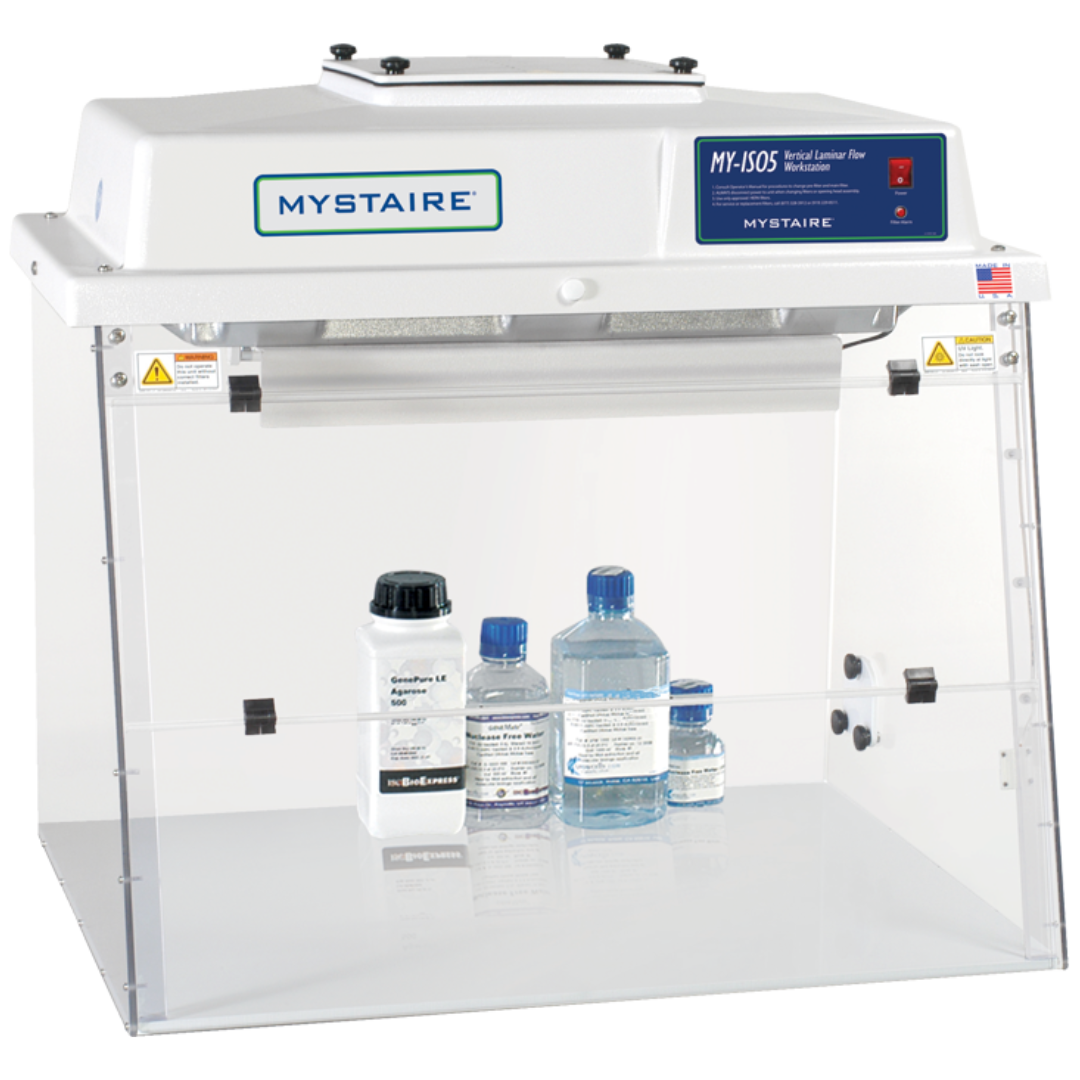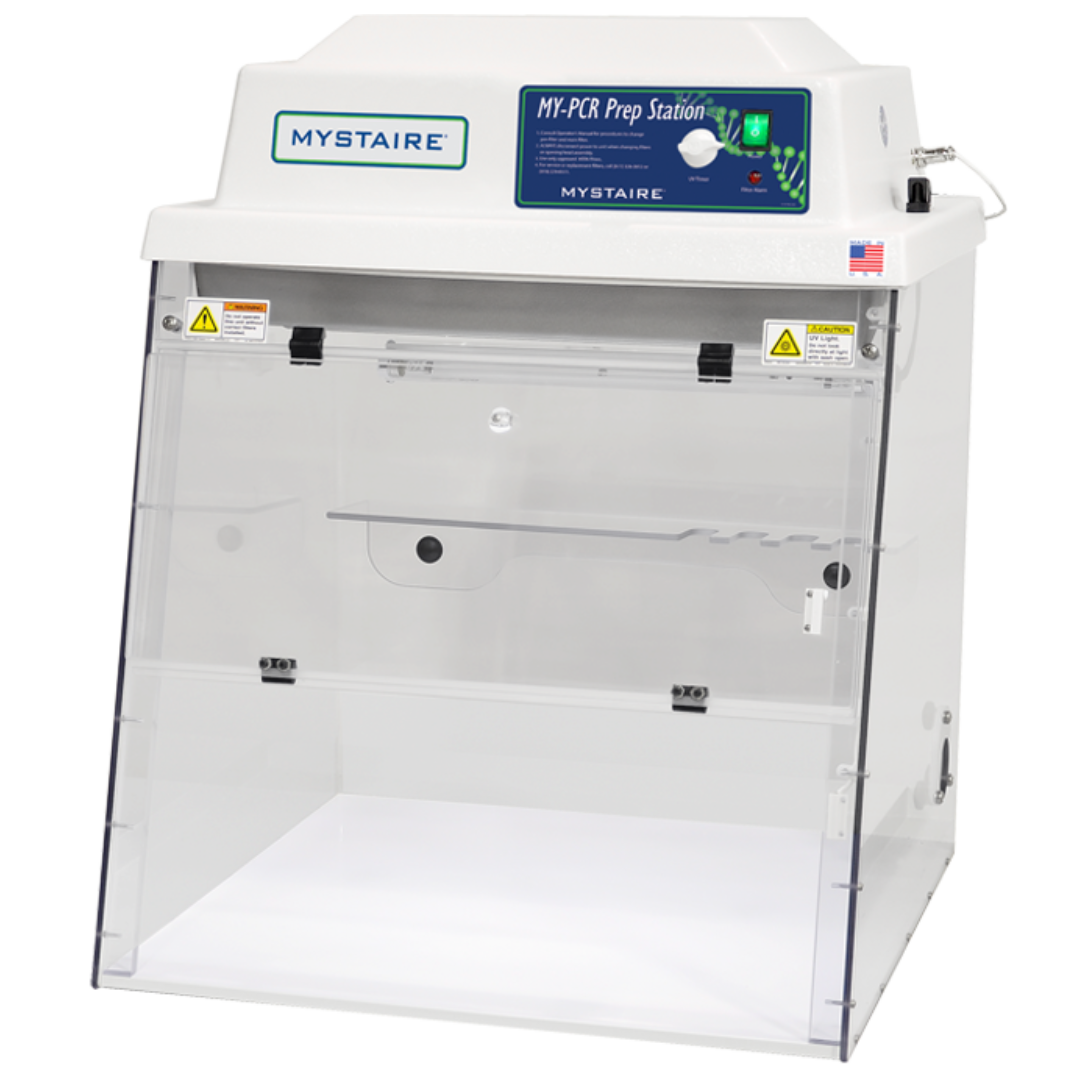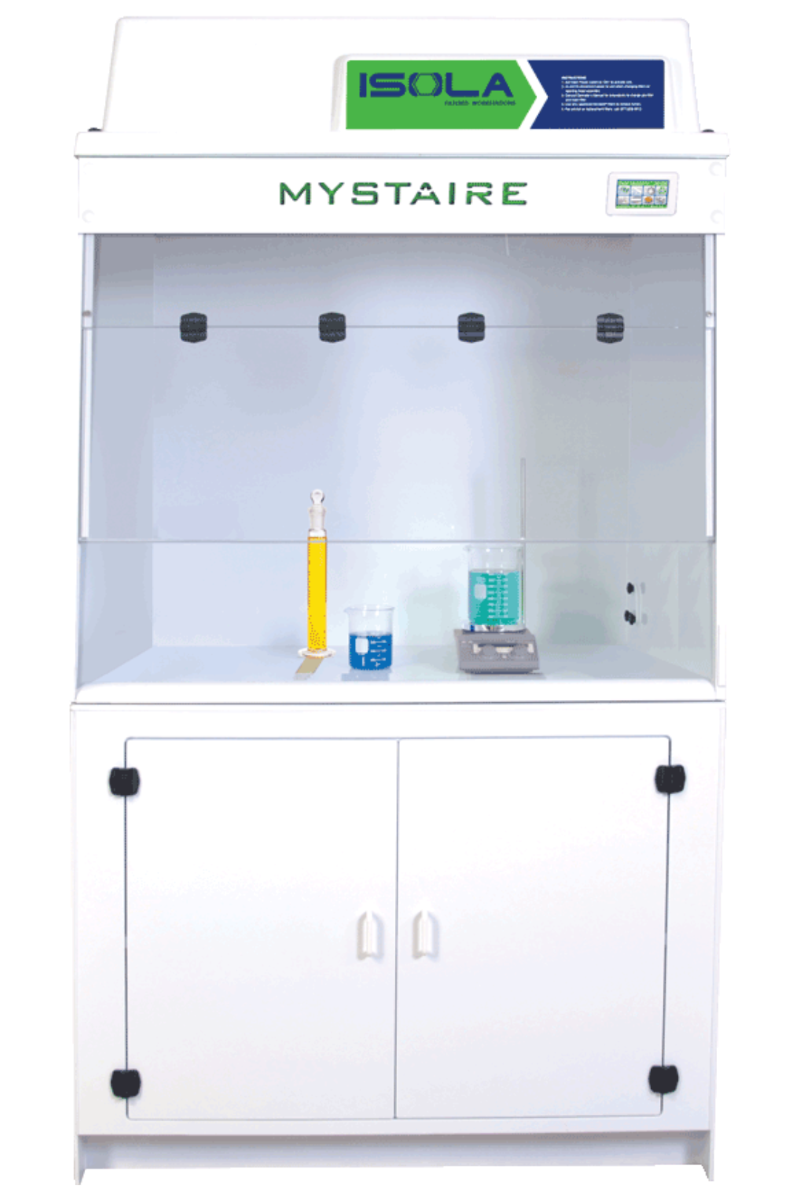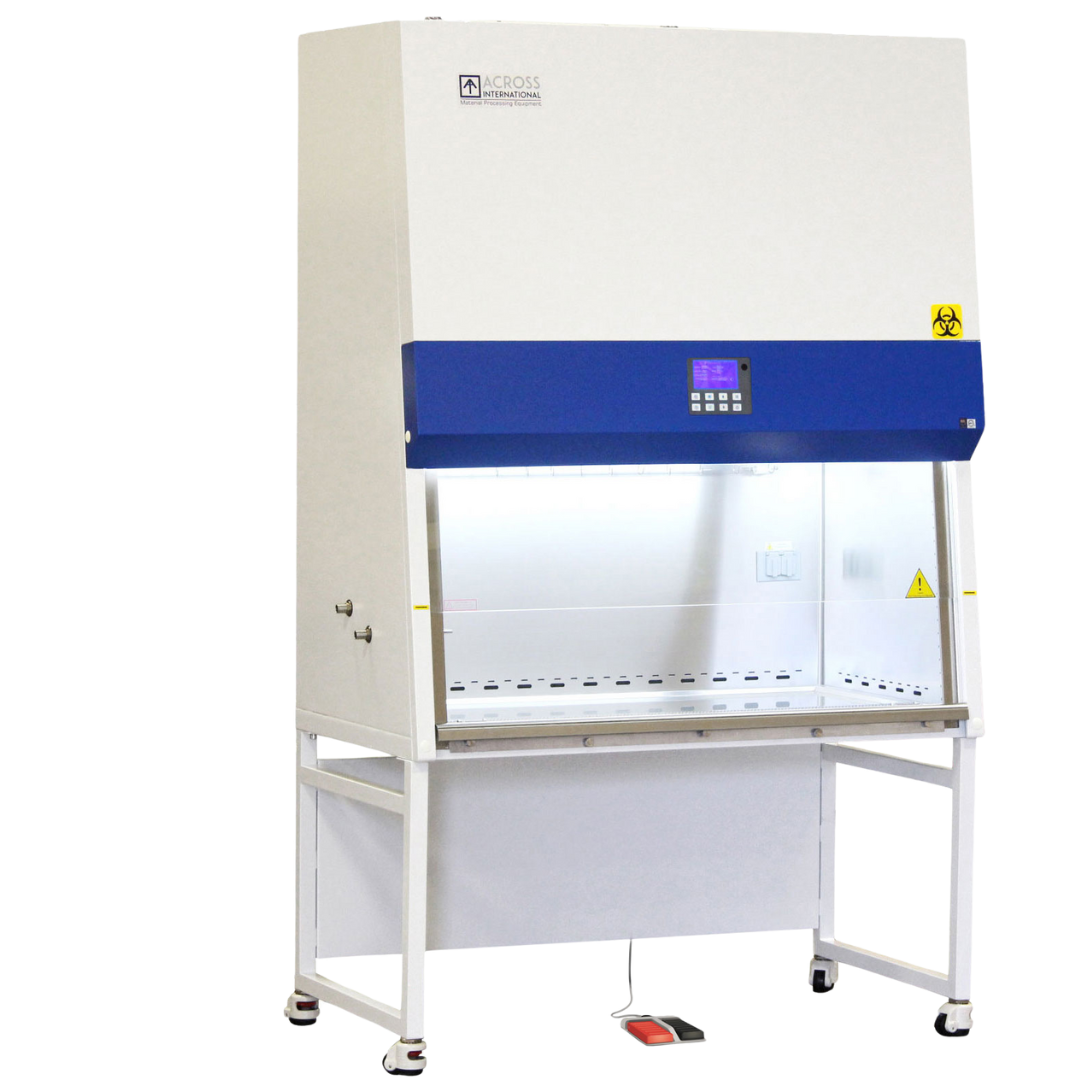The Different Types Of Ductless Hoods

Without a doubt, laboratory work requires meticulous attention to detail, especially regarding safety. That is why selecting the appropriate fume hood can significantly impact the well-being of researchers, the integrity of samples, and the environment.
This article delves into the various ductless hoods, exploring their applications, functionalities, and key considerations to guide you in making an informed decision for your specific laboratory needs. From Laminar Flow units to Biosafety Cabinets, we'll unveil the unique strengths and considerations, empowering you with the knowledge to discern the ideal ductless hood for your laboratory's requirements.
A Frequently Asked Questions section will be at the end of the article.
Laminar Flow Hoods
Laminar Flow Hoods are unidirectional hoods commonly used when non-hazardous samples require a sterile environment. They maintain a sanitary environment using positive displacement airflow, which comes in two forms: Horizontal and vertical airflow.
Horizontal Laminar Flow Hoods filter air using HEPA or other filters into the top of the machine, then move the air downward and horizontally across the samples and work surface. Vertical Laminar Flow Hoods also filter air at the top of the unit. However, it pushes the air downward on top of the samples and work surface, creating a waterfall effect.
For a more in-depth understanding of direction airflow, check out the following article: Understanding Directional Airflow of Ductless Fume Hoods

These units aim to prioritize the protection of the samples over the user as the contaminated air flows out of the sash toward the operator. It protects the samples by preventing cross-contamination (vertical) or airborne contaminants from contacting them while handled under the hood (horizontal). Therefore, avoid using any harmful materials, substances, and more with these hoods as it may result in bodily harm, even death.
Choosing between the two types of laminar flow hoods depends on the operator's preferences and their applications. See the following chart to evaluate the various applications that may be relevant to you.
| Horizontal Laminar Flow | Vertical Laminar Flow |
|---|---|
Medical Compounding |
Working with Non-Hazardous Powders |
Small Electronic Examination, Assembly, and Disassembly |
Lage Electronic Examination, Assembly, and Disassembly |
Cell Culture |
Microbiological Examination |
Tissue Culture |
Non-Hazardous Chemical Reactions |
Media Culture Preparation |
Chemotherapy Preparation |
Thin Film Deposition |
IV Verification System Preparation |
Sterile Compounding |
Total Parenteral Nutrition (TPN) Compounding |
PCR Hoods
Also known as PCR Workstations, PCR Hoods are commonly used in molecular biology and genetic laboratories where sterilization and preventing sample cross-contamination are essential.
PCR Hoods work similarly to vertical laminar flow hoods. A HEPA filter at the top of the unit filters the air and blows it downward toward the work surface. This locks the samples in place with positive pressure, primarily protecting the samples. Because of their built-in UV lights, PCR Workstations excel at sterilizing the work surface, tools, and machinery.
This combination makes PCR Hoods safe for non-hazardous DNA and RNA manipulations and applications, along with applications with which vertical laminar flow units are used. They are also used for mycology, forensics, and general research protocols.

Properly constructed PCR hoods are made of materials that prevent UV radiation from reaching the operator, such as UV-resistant polycarbonate. Moreover, the UV light should turn off automatically when the sash is opened, enabling the operator to access the workspace safely without any potential harm from UV light. Many of these devices come with a timer that automatically turns off the UV light once the work surface has been sanitized, depending on the strength of the UV.
Ductless Fume Hoods
A Ductless Fume Hood operates differently than a laminar flow or PCR hood. Rather than using positive pressure, it utilizes vertical or horizontal negative pressure to filter out harmful fumes, vapors, VOCs, and particles before recirculating air back into the laboratory. Because of its advanced filtration, these units do not have to be ducted, depending on what the operator plans to use under the hood.
Ductless fume hoods offer numerous benefits. They are economical as they work alongside HEPA, carbon, and other filters to purify the air and do not have the added installation cost. Since they do not require installation, the units are portable and can run again in minutes after transport. They are also environmentally friendly as they reduce energy consumption per hood and do not release harmful fumes, vapors, or other hazardous particles into the atmosphere.
Well-designed Ductless Fume Hoods will come with an array of safety features. These safety features include:
Filter Sensors
Filter sensors will notify the operator of saturated filters using audible and visual alarms. When notified, the operator should act and replace the saturated filters accordingly.
Gas Sensor Technology
Ductless Fume Hoods with gas sensor technology monitor the fumes and vapors of toxic chemicals in case of chemical breakthroughs. The operator will receive an alert if this occurs.
Airflow Sensors
Airflow sensors will continually read the face velocity of the airflow and will notify the operator when airflow velocity falls under the recommended 80 fpm standard. Airflow velocity may decrease because of issues regarding the blower or blocked filters.

Ductless Fume Hoods may require additional maintenance and are limited by the chemicals that can be used. They cannot handle extreme heating or chemical volumes of 500mL or more, nor can they tolerate long chemical exposure times. Depending on the frequency of use, the operator may be required to replace the filters more frequently to ensure the unit's and others' protection.
If radioisotopes, nanoparticulates, or perchloric acid are expected to be used under the fume hood, you must have a ducted fume hood to protect yourself and your facility.
These units are ideal for many laboratories and applications. If you are considering purchasing a Ductless Fume Hood, please contact a specialist to ensure the purchase is right for you and to get you on a proper filtration purchasing plan.
Biosafety Cabinets
Biosafety Cabinets are hoods designed to handle biohazardous and infectious agents to protect the operator and the laboratory room. They come in an array of classes that tackle specific applications.
Class I
Class I Biosafety Cabinets operate similarly to Ductless Fume Hoods. The unit intakes air through the open sash and filters out the contaminated air back into the laboratory using a variety of carbon, HEPA, or other filters. It differs due to its ability to protect the environment and the user, while ductless fume hoods primarily safeguard the operator.
Class II
Class II Biosafety Cabinets combine a vertical laminar flow and ductless fume hoods, using both positive and negative pressure to protect the user, samples, and laboratory environment. With these units, air flows inward through the open sash and is either recirculated back into the unit after being filtered (hence the positive pressure) or recirculated back into the laboratory (negative pressure). These units are required to maintain an in-flow velocity of 100 fpm to meet ISO 5 cleanroom standards.
It's important to note that Class II units have additional sub-classes, such as Types A1, A2, B1, B2, and C1. These sub-classes have their own unique requirements and features to meet laboratory safety rules and regulations. We will only discuss Type A1 and A2 since they do not require ducting.

Type A1 and A2
Class II Type A1 and A2 Biosafety Cabinets are commonly used in laboratories with biosafety levels 1 through 3. Of the two types, A2 is preferred in laboratories because of its ability to exhaust some chemicals, which type A1 lacks.
Be sure to consult a professional about the chemicals used under the hood, as exhausted air could be recirculated back into the hood, accumulating potentially dangerous chemical vapors.
Class III
Class III Biosafety cabinets are constructed as completely enclosed, leak-proof units with ventilation and gloves. These units operate with negative displacement airflow, with inflow air being filtered before entering and exiting the glove box. These glove boxes handle toxic and hazardous particulates, allowing for safe manipulations and experimentations of the samples.
Class III units come equipped with interlocked chambers that allow for sterilization before and after samples enter the glove box, ensuring the safety of the user, environment, and samples. The user can also place materials in and out of the unit using a dunk tank, usually filled with disinfectant, providing further protection.
Applications may include pharmaceutical research, nanotechnology, and biochemistry. They meet ISO Class 3 requirements and are most frequently used in Biosafety Levels 3 and 4. Be sure to check your user manual to see which Biosafety levels the unit is appropriate for.
All three classes are safe for samples and agents classified as Biosafety Levels 1, 2, 3, and 4 (unless disclosed otherwise) as long as additional protective measures are in place to meet these standards.
Frequently Asked Questions:
Which is better: Horizontal or Vertical fume hoods?
Neither horizontal nor vertical airflow fume hoods are superior to the other. Instead, their effectiveness in a laboratory varies based on their applications. Each has its advantages and disadvantages, but they are primarily based on the preferences of the user and the applications that may be involved.
Can fume hoods operate in negative or positive displacement rooms?
Negative or positive displacement rooms should not affect these devices' operation or effectiveness. However, some units may be required to operate in either a positive or negative displacement room. Check your user manual or contact a specialist to ensure guidelines are met.
How often do I need to replace the filters?
The frequency at which filters need to be replaced depends on the type of filter, how often the units are used, applications, and more. Please contact our team for more information.
What is the life span of a ductless hood?
Although ductless hoods are designed to exceed the life of ducted hoods, their life span will depend on the materials, environment, use, and more. Selecting well-constructed ductless hoods, such as hoods made with lab-grade polypropylene, and monitoring systems will help extend the life span of your hood.
How are these units tested before arriving at my laboratory?
Pretesting varies based on the manufacturer and/or the product. Please reach out to our expert team for further details.
We hope this article has helped you understand the various types of ductless hoods used in laboratories. We want to thank Mystaire, Inc., who has taken the time to review our article to ensure accuracy. If you have any questions, contact our insightful team at 1-800-733-2522, Email, or message us via Live Chat, available on our website.
Sources:
https://www.aircleansystems.com/benefits-of-ductless-fume-hoods
https://www.aircleansystems.com/faq
https://www.airscience.com/laminar-flow-hood-vs-ductless-fume-hood
https://www.airscience.com/pcr-workstation-dead-air-vs-laminar-flow
https://www.besttechnologyinc.com/wet-bench/what-is-a-fume-hood-how-do-fume-hoods-work/
https://www.igenels.com/pcr-workstation-everything-you-should-know/
https://www.labconco.com/articles/considering-a-ductless-hood
https://www.labconco.com/articles/what-are-the-biosafety-cabinet-classes
https://www.labconco.com/articles/whats-the-difference-between-a-fume-hood-and-a-b
https://www.mystaire.com/news/filtered-or-ductless
https://www.mystaire.com/news/new-generation-laboratory-safety-filtered-fume-enclosures
https://www.nationallaboratorysales.com/blog/what-is-a-fume-hood-sash/
https://www.ossila.com/pages/laminar-flow-hoods-vertical-vs-horizontal
https://resources.workstationindustries.com/blog/ducted-fume-hoods-vs-ductless-fume-hoods















